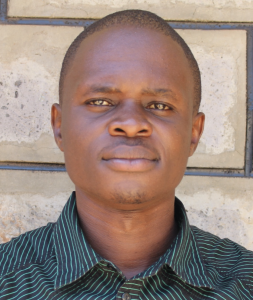Kapchemugung' Primary School sits on a small piece of land on the outskirts of Gambogi town. Buildings in the area are of a permanent nature, and they are connected to electricity. The road leading to the school is well-paved, allowing easy access to the school.
Founded in 1935 by the Kapchemugung' Pentecostal Assemblies of God church, the school began in just one muddy, grass-thatched house divided into classrooms and an office using mats. In 1962, the then-headteacher, Mr. Kipruto, started building semi-permanent buildings to accommodate all students, especially during the rainy season. Currently, the school has 13 permanent classrooms, an administration block, and a few latrines, all serving 538 students and 20 teachers and staff.
Despite its age, the school's growth has been slow, and its academic performance average due to the school's inability to provide enough clean water for students. There is just one small water source on campus - a plastic rain tank - that runs dry within a few days after it rains. This is due to the tank's small capacity compared to the student population's high needs.
To make up for their lack of water, the school requires students to fetch water during break times and often, even during scheduled class times. The students head to various sources off-campus. One source is a partially protected spring with a slow discharge rate during the dry season, wasting students' time as they wait to fill their jerrycans.
The other water sources students choose all surface water, typically small streams on the side of the road leading to the school. Students choose these sources because they do not have to wait in line like at the spring to try to hurry back to class sooner.
The stream water, however, is not safe for consumption. As a result, students and teachers alike report cases of waterborne and water-related diseases throughout the year. For students, that means more class time missed and expensive medical bills for their families.
"Two weeks ago, I experienced sore throat issues forcing me to seek medical attention. I became uncomfortable and couldn't attend to my class lessons," said Deputy Headteacher Joseph Chebui.
"The lack of sufficient water in school is very inconveniencing for me. When I am not able to get water to carry to school, I am forced to abscond from school for fear of being punished," said student Eunice.
What We Can Do:
Rain Tank
A 75,000-liter rainwater catchment tank will help alleviate the water crisis at this school. The school will help collect the needed construction materials such as sand, bricks, rocks, and water for mixing cement. We will complement their materials by providing an expert team of artisans, tools, hardware, and the guttering system. Once finished, this tank will begin catching rainfall used by the school’s students and staff for drinking, handwashing, cooking, cleaning, and much more.
The school and we strongly believe that all of these components will work together to improve standards at this school, which will help lead to better student academic performance and unlock the potential for these students to live better, healthier lives.
Handwashing Stations
The student health club will oversee the two new handwashing stations we will provide and ensure they are kept clean and in working condition. The club leaders will fill the handwashing stations with water daily and make sure they are always supplied with a cleaning agent such as soap or ash.
VIP Latrines
Two triple-door latrine blocks will be constructed with local materials that the school will help gather. Three doors will serve the girls, and three doors will serve the boys. These new latrines will have cement floors designed to be easy to use and clean. And with a rain tank right on school property, there should be enough water to keep them clean.
Training on Health, Hygiene, COVID-19, and More
We will hold a one-day intensive training session with students, teachers, and parents. This training will cover a wide range of topics, including COVID-19 symptoms, transmission routes, prevention; personal and environmental hygiene; and the operation and maintenance of the rain tank, latrines, and handwashing stations. There will be a special emphasis on handwashing.
Our team of facilitators will use various methods to train, including participatory hygiene and sanitation transformation and asset-based community development. We will initiate a student health club, which will prepare students to lead other pupils into healthy habits at school and home. We will also lead lectures, group discussions and provide illustrative handouts to teach health topics and promote good hygiene practices within the school, including handwashing and water treatment. We will then conduct a series of follow-up training before transitioning to our regularly scheduled support visits throughout the year.

 Rainwater Catchment
Rainwater Catchment
 Rehabilitation Project
Rehabilitation Project








































